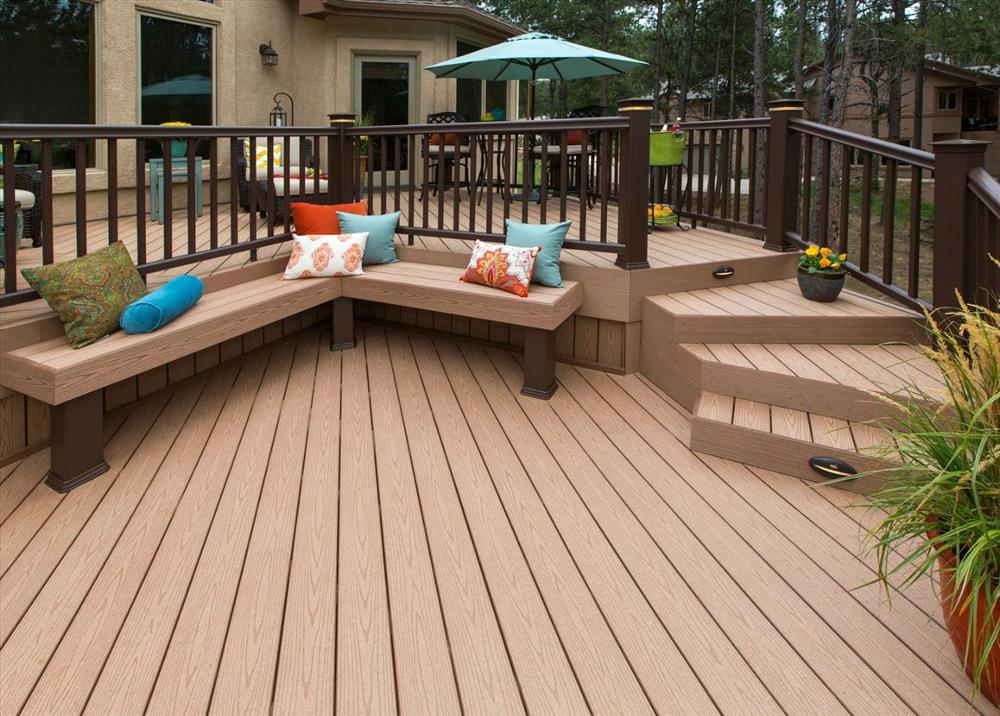Wood plastic composite (WPC) is a new type of environmentally friendly material, which combines the characteristics of plastic and wood fiber, and has a series of advantages. The new material is mainly made of polyethylene, polypropylene, polyvinyl chloride and other plastics, instead of commonly used resin adhesives, and is mixed with more than 35%-70% of wood flour, rice husk, straw and other waste plant fibers. This mixed material is then processed by extrusion, molding, injection molding and other plastic processing processes to produce plates or profiles, and is widely used in building floors, building wallboards, furniture, logistics packaging and other industries.
Wood-plastic composite materials are widely used, from pallets in the packaging industry to interior decoration parts in automobiles, and are also widely used in building materials. It is not only environmentally friendly and recyclable, but also can effectively use waste plastics and agricultural and forestry waste, reduce costs and reduce white pollution
The production process of wood-plastic composite materials includes mixing, granulation and injection molding steps, which make the material have excellent processing and mechanical properties, such as sawing, nailing and planing, and the nail holding force is better than other synthetic materials.

Wood-plastic composites (WPC) offer a multitude of potential benefits that make them a valuable investment to meet your needs. The main advantages of WPC materials include:
- **Good Processing Performance**: WPC has processing capabilities similar to wood, which can be sawed, nailed, and planed using woodworking tools, and it has a significantly better nail-holding force than other synthetic materials.
- **Good Strength Performance**: Due to the thorough mixing with fibers, WPC possesses mechanical properties such as compression resistance and bending resistance comparable to hardwood, with a surface hardness that is 2 to 5 times higher than that of wood.
- **Water and Corrosion Resistance**: Compared to wood, WPC can resist strong acids and alkalis, is waterproof, moisture-proof, insect-resistant, and corrosion-resistant, with a service life that can reach over 50 years.
- **Environmental Friendliness**: WPC can turn waste into a treasure, is 100% recyclable, and is pollution-free, harmless, and recyclable, making it environmentally friendly.
- **Wide Application**: WPC is widely used in industries such as construction materials, furniture, and logistics packaging, especially in construction products, where it accounts for 75% of the total volume of wood-plastic composite goods.



With the continuous advancement of production technology, the application of WPC in the field of building materials has been significantly enhanced, especially in building floors and wall panels. Through advanced mold technology and surface treatment processes, WPC materials can now simulate more natural and realistic wood grain effects, offering a variety of colors and textures to meet different design and personalized needs. By adding new preservatives and antifungal agents, the corrosion resistance of WPC materials has been improved, and the introduction of UV stabilizers and pigments has enhanced the ability of WPC materials to withstand UV radiation, extending their outdoor service life.
As production scales expand and processes are optimized, the cost of WPC materials gradually decreases, enhancing their competitiveness in the market. They are an ideal alternative to traditional wood products.
praysunmaterials@gmail.com